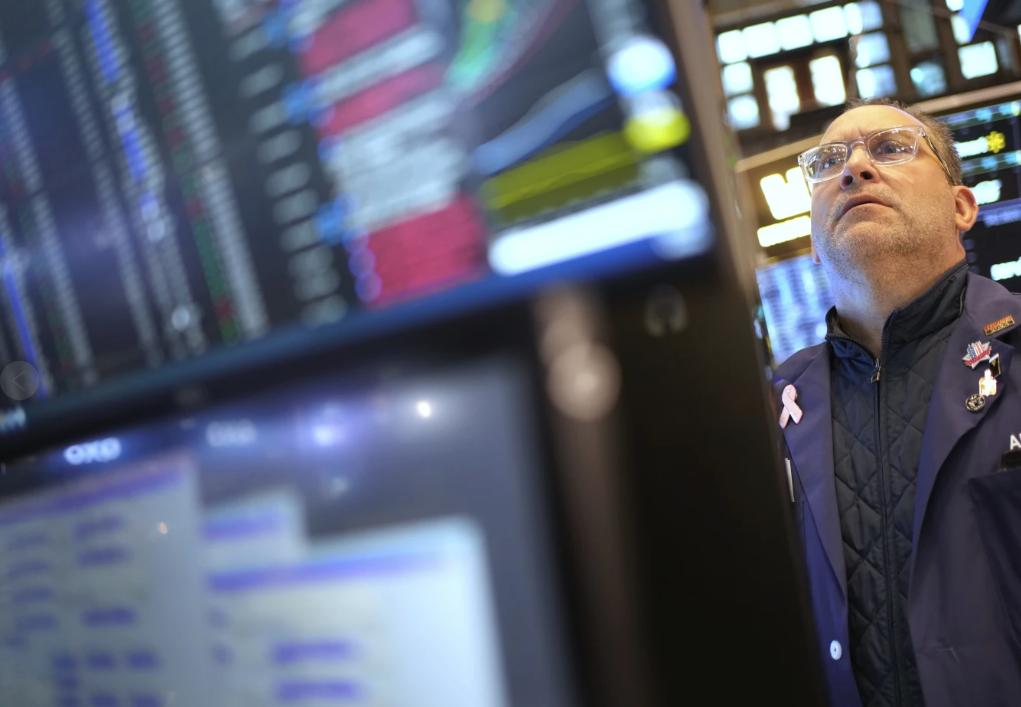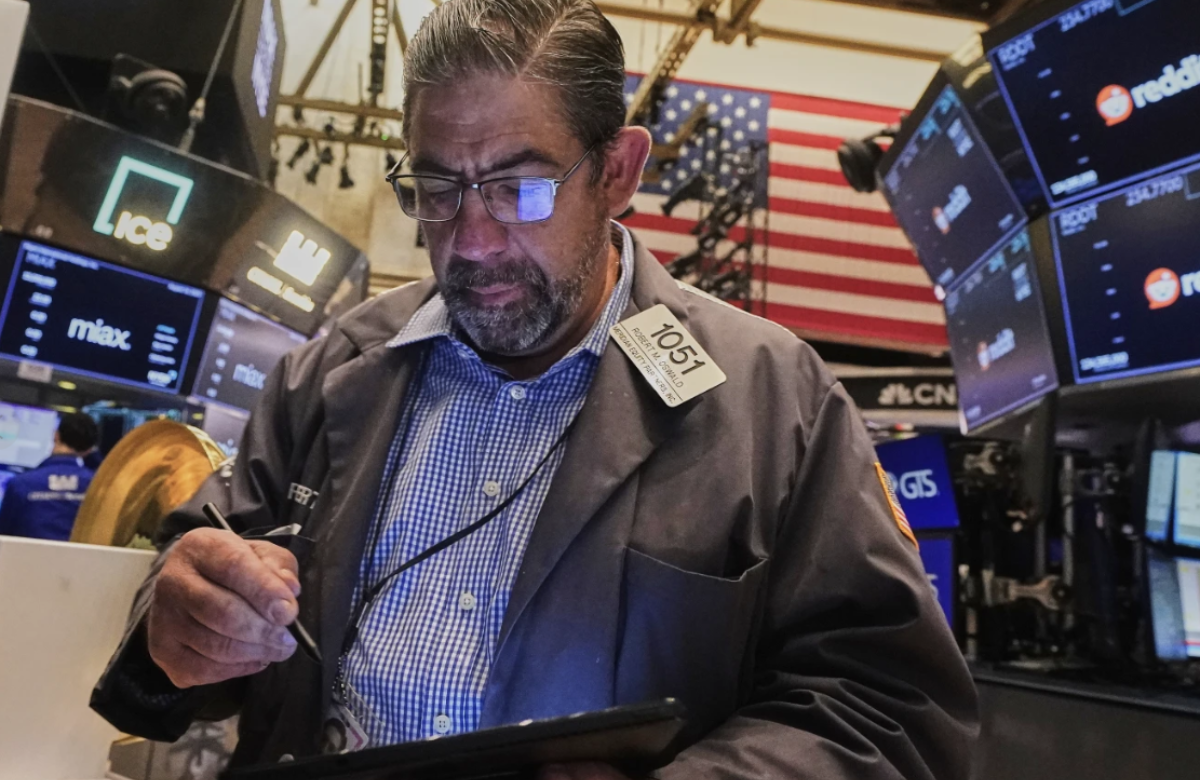U.S. stocks opened Wednesday with significant losses after a report suggested the economy may have contracted at the start of the year. However, the declines quickly eased as uncertainty about President Donald Trump’s trade war continued to affect Wall Street.
The S&P 500 was down 0.5% by the afternoon, breaking a six-day winning streak, while the Dow Jones Industrial Average dropped 94 points (0.2%) and the Nasdaq composite fell 0.9%. Earlier, both indexes had been on track for much steeper losses, with the S&P 500 sinking by as much as 2.3% and the Dow dropping nearly 780 points. The downturn followed a disappointing report on U.S. economic growth, which fell far short of expectations, signaling a sharp slowdown compared to the previous quarter.
A surge in imports ahead of looming tariffs weighed on the economy, contributing to the weak growth figures. Some economists are now raising concerns about the possibility of “stagflation,” where the economy stagnates while inflation remains high. This scenario is troubling for the Federal Reserve, as its usual tools to combat inflation, such as raising interest rates, could worsen economic stagnation.
Ellen Zentner, Morgan Stanley’s chief economic strategist, described the weak GDP report as a warning sign for the economy, signaling potential stagflation.
There was some good news later in the morning when a report showed inflation slowed in March, easing to 2.3% from February’s 2.7%. This brought some relief to investors, and stocks rebounded, cutting their losses in half.
However, other reports fueled concerns about a weakening economy. An ADP report showed that private sector hiring in April was much lower than expected, with job additions falling to less than half the forecasted number. This development is concerning because a strong job market has been a key pillar supporting the economy.
The uncertainty surrounding Trump’s trade war and the unpredictable nature of tariffs continue to loom over the economy, with many fearing that the ongoing conflict could push the U.S. into a recession. The confusion surrounding trade policies has already caused volatile market swings, with sharp fluctuations in stocks, bonds, and the U.S. dollar.
While the S&P 500 had been down by almost 20% from its record earlier this year, optimism about potential trade deals and stronger-than-expected corporate profits helped the market recover much of its losses. The index ended April with a modest loss of less than 2%, a far cry from the steep losses in March.
Strong earnings reports from major U.S. companies also supported the market, with Seagate Technology seeing a significant gain of 9.1%. However, concerns about the artificial intelligence (AI) sector weighed down stocks. Super Micro Computer reported delayed customer purchases and slashed its sales and profit forecasts, causing its stock to tumble by 14.1%. Other AI-related stocks, including Nvidia, also saw declines.
Starbucks also posted disappointing results, with its stock falling 6.1% after missing analysts’ expectations for revenue and profit. Despite a sales increase for the first time in over a year, the coffee chain acknowledged that its efforts to turn the business around were ongoing.
In the bond market, Treasury yields remained relatively stable. The yield on the 10-year Treasury eased slightly to 4.18% from 4.19% on Tuesday, after a recent unusual spike raised concerns about global investor confidence in U.S. bonds.
Meanwhile, international markets had mixed results, with European and Asian stock indexes finishing unevenly.














